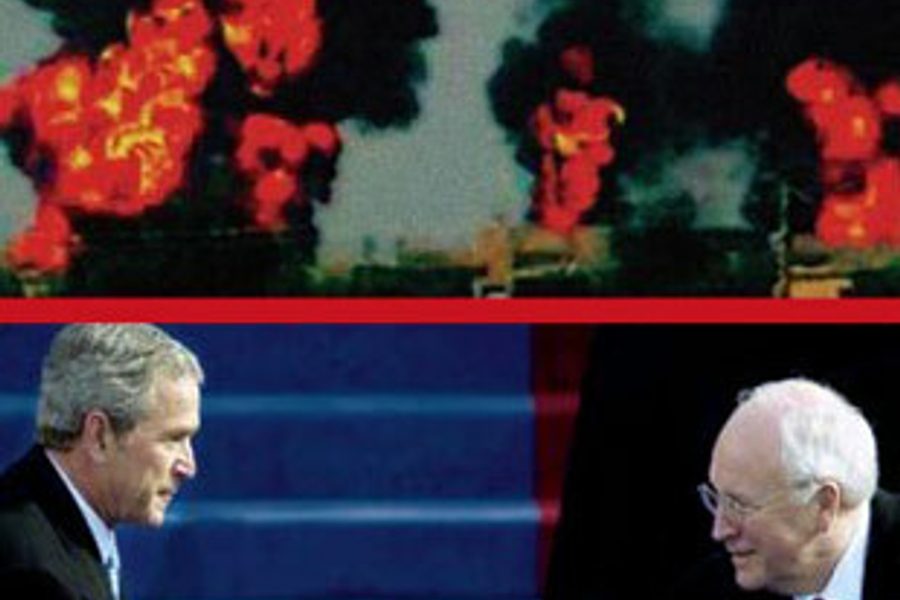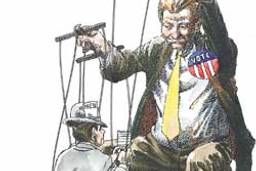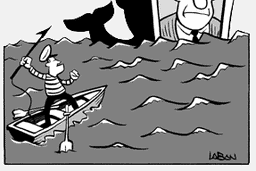The Rise of Professional Journalism
Reconsidering the roots of our profession in an age of media crisis.
Robert McChesney and John Nichols

It comes as a surprise to many to learn that the notion of objectivity or simply professional journalism is a relatively recent development in the United States. In the first one hundred-plus years of the republic, journalism tended to be highly opinionated and partisan. Indeed, the first few generations of U.S. journalists – the years from Madison and Jefferson to Jackson and Lincoln – were diametrically opposed to what many Americans think is intended by the First Amendment: a commitment to neutral, values-free news reporting. Horace Greeley did not write, “Both the East and the West have their relative merits for a recent college grad”; he wrote, “Go West, young man.” And that was not his only pronouncement. Greeley’s New York Tribune, the great American journal of the mid-nineteenth century, was never neutral. It prodded the still-new nation to address the sin of slavery, to consider the dangers of imperialism and to recognize the need to provide for the common welfare. Greeley’s writers were anything but impartial observers; one of his regular correspondents, and arguably among the greatest journalists of the nineteenth century, was a German scholar named Karl Marx. The Tribune was typical of its times and, with other newspapers of its kind, essential to the progress that America achieved in the period of transition from revolutionary republic to global superpower.
The Dark Ages
In recent journalism history textbooks, this period, especially the decades immediately following independence, has been referred to as the Dark Ages of American journalism – with the premise that the less said about it, the better. Upon closer inspection, however, it becomes clear that partisan journalism had its strengths, not the least of which was its tendency to contextualize political issues so that citizens could recognize seemingly random events as part of a coherent pattern. Such an approach tends to draw people into public life. Observers note that nations around the world with partisan press systems tend to have high voter turnouts and more passionate political cultures. In the United States, the high-water mark for partisan journalism was arguably the 1820s and 1830s, and in the northern states this era is characterized as one of broad democratic participation among those who were allowed to vote.
Partisan press systems have their clear downside, too. After all, the press systems of Nazi Germany and the Soviet Union were partisan. A partisan press can degenerate into shameless lying and blatant propaganda, the purpose of which is to depoliticize the citizens rather than engage them. The key to having partisan journalism promote democratic values, rather than repress them, is to have a wide range of partisan viewpoints available, and for it to be feasible to launch a new partisan newspaper or magazine if one is dissatisfied with the existing range of options. One way to view the freedom of the press clause in the First Amendment is to see that it protects the right of citizens to launch their own publications, even if they are opposed to the political views of those holding political power at the time. That radical idea was mainstream thinking at the time of the country’s founding.
Until the middle of the nineteenth century, massive postal and printing subsidies assured that there was a range of newspapers and magazines in circulation far beyond what market forces would have permitted. Over the course of the nineteenth century, as publishing became an increasingly lucrative sector, market competition generated innumerable new newspapers, with publishers seeking profit as much or more than political influence. This was a classic competitive market, where new entrepreneurs could enter the field and launch a newspaper with relative ease if they were dissatisfied with the existing publications. Major cities like New York or Chicago or St. Louis tended to have well over a dozen daily newspapers at any given time, reflecting a fairly broad range of political viewpoints. The system was far from perfect, yet it worked.
But built within the commercial press system of the late nineteenth century were the seeds of its own destruction, which led to the greatest crisis in U.S. journalism until the one we are in the midst of today. On the one hand, as newspapering became an explicitly commercial enterprise, political journalism was no longer privileged per se, as the point was to generate as many readers as possible as inexpensively as possible. This led to the rise of sensationalism, blatant fabrication of stories, widespread bribing of journalists, and all sorts of other disreputable measures that undermined the legitimacy of journalism.
On the other hand, as newspapering became big business, markets became much less competitive. By the early twentieth century, there were fewer and fewer newspapers in any given community, and in many towns there remained only one or two competing dailies. Barriers to entry emerged that made it virtually impossible to launch a new newspaper in a community, even if the existing papers were highly profitable. In short, newspaper publishing became monopolistic, far more so than most other major industries. Indeed, there has not been a single profitable new daily newspaper established in the United States in an existing market since World War I, despite the growth of the nation and the exceptional profitability in the industry overall.
This led to a political crisis for journalism. It was one thing for newspapers to be stridently partisan when there were numerous competing voices and when it was not impossible to launch a new newspaper if the existing range was unsatisfactory. It was altogether different when there were only one or two newspapers and it was impossible to start a new one. Moreover, as the papers were larger and the owners were always wealthy, the politics tended to be antilabor and probusiness. In community after community, newspapers were in bed with those who owned and controlled the community. In this context partisanship reeked of the heavy-handedness one associates with authoritarian regimes, or, to be more accurate, company towns.
During the first decades of the twentieth century, the crisis spawned by sensationalism and right-wing crony partisanship reached a boiling point. In the 1912 presidential race, all three challengers to President William Howard Taft – Democrat Woodrow Wilson, Progressive Theodore Roosevelt, and Socialist Eugene Debs – criticized the corruption and venality of the press. It was in this cauldron of controversy that professional journalism was spawned. A driving force was the publishers themselves who understood that partisan and sensationalistic journalism was undermining their business model. They had to accept self-regulation to protect their profits and to ward off the threat of organized public-reform efforts.
Professional journalism was the solution to the crisis. It was the revolutionary idea that the owner and editor of a newspaper would be split, and a “Chinese Wall” put between them. News would no longer be shaped to suit the partisan interests of press owners, but rather would be determined by trained nonpartisan professionals, using judgment and skills honed in journalism schools. There were no such schools in 1900; by the end of World War I nearly every major journalism school in the nation had been established, often at the behest of newspaper owners. Professionalism meant that the news would appear the same whether the paper was owned by a Republican or a Democrat. Professionalism meant that there was no longer any reason to be concerned about the monopolistic nature of newspaper markets since owners would not abuse their power and, besides, so the theory went, more newspapers in the same community would merely reproduce the same professional content, so they were redundant.
Professional journalism: pros and cons
The strengths of professionalism are self-evident. It gives editors and reporters a measure of independence from the owners’ politics and from commercial pressures to shape the news to please advertisers and the bottom line. It places a premium on being fair and upon being accurate. It makes it a cardinal sin, a career killer, to accept bribes or to fabricate stories. No wonder so many Americans think that the problem with U.S. journalism is that there is too little “objectivity,” as professional journalism is often characterized, albeit inaccurately. But even the strongest proponents of neutral journalism now recognize that values play a crucial role in story selection, deciding what gets covered and what does not, not to mention how the coverage is framed. Journalists covering a story can never be objective in the sense of a number of mathematicians who would all come up with the same answer for a problem. Instead of objectivity, the preferred terms today are fairness, accuracy, and balance.
Professionalism looked awfully good compared to what it replaced and was largely welcomed across the board. Yet criticism of the weaknesses of professional journalism and its biases began almost immediately, and by the second half of the twentieth century had become widespread in both journalists’ memoirs and in sociological criticism of the news. As Ben Bagdikian famously put it, the core problems with professional journalism as it developed in the United States are threefold: 1) reliance on official sources; 2) fear of context; 3) a “dig here, not there,” built-in bias concerning what areas of power are fair game and what are off-limits.
Professional journalism places a premium on legitimate news stories based upon what people in power say and do. The appeal is clear. It removes the tinge of controversy from story selection – “Hey, the Governor said it so we had to cover it” – and it makes journalism less expensive: Simply place reporters near people in power and have them report on what is said and done. It also gives journalism a very conventional feel, as those in power have a great deal of control over what gets covered and what does not. Reporting often turns into dictation as journalists are loathe to antagonize their sources, depending upon them as they do for stories. Indeed, successful politicians learn to exploit journalists’ dependence upon official sources to maximum effect. This dependence also makes possible what the modern public-relations industry does in its surreptitious manner.
The best-case scenario for journalists relying on official sources is when people in power have strong debates over fundamental issues, providing a good deal of wiggle room in which journalists can operate. The 2005 debate over privatizing Social Security is a good example, as President Bush and leading Democrats squared off in opposite corners. The worst-case scenario, where those in power are in general agreement and are not debating an issue, is a nightmare for democratic journalism. If journalists raise an issue that no one in power is debating, they are instantly accused of being ideological and unprofessional and attempting to force their own views into the news. It is criticism few journalists enjoy – it can be a career killer – so the reliance on official sources has a tremendous disciplinary effect on the range of legitimate news stories. It also means the public is at the mercy of those in power to a far greater extent than was the case under partisan journalism.
Context is often eschewed by professional journalism because it opens the door to the charge of partisanship. It is awfully difficult to contextualize a story well without showing some partisan inclinations or making some controversial value judgments. So professional journalism tends to pummel people with facts, but rarely pummels people with a nuanced appreciation of what the facts might mean. This helps explain the numerous studies that show that sustained consumption of the news on a particular subject often does not lead to a better understanding of the subject and sometimes leads to more confusion. Which means that professional news can have the ironic effect of making public life more confusing and less interesting and attractive, thereby promoting depoliticization. This is one area where professional journalism as it developed in the United States stands in direct contrast to its partisan predecessor. If nothing else, partisan journalism put stories in context and attempted to find the common thread between them.
“Dig here, not there” refers to the implicit or unspoken biases built into the professional code. They tend to be the biases that are favored by media owners, and journalists who climb the organizational ladder tend to be those who have the least problem internalizing them. For example, it is unusual for local news media to do hard-hitting critical examinations of the most powerful families and commercial institutions in their own communities. It is one of the great weak spots of our journalism, because if the local media in Decatur, Illinois, do not investigate the big shots of Decatur, it is highly unlikely the local news media of Fresno, California, will send a delegation of reporters to Decatur to do the job for them.
At a more macro level, as Bagdikian points out, our news media have internalized the notion that corporate power is largely benevolent, capitalism is synonymous with democracy, and the United States is a force for good in the world. So it is that corporate malfeasance gets barely a sniff of investigative journalism, unless blatant transgressions affect investors, while stories concerning governmental malfeasance, especially in programs intended to benefit the poor and working class, are stock-in-trade.
When professional journalism is looked at in this light, it can be seen as a mixed blessing. Not only does professional journalism have biases, it has the audacity to insist that it is unbiased.
A return to explicit partisanship?
Some have concluded, after a rigorous accounting of the flaws in professional journalism, that we would be far better to return to a more explicitly partisan form of journalism. Let’s cut the flawed pretense of neutrality and professionalism, the reasoning goes, and let all sides have at it. The problem with this argument is that it accepts the premise that the type of professional journalism that emerged in the United States is the only type possible, and the only alternative to it is explicit partisanship. In fact, there was a major debate in the 1930s over what constituted professional journalism between the newly formed journalists’ union, the Newspaper Guild, and the press barons. To George Seldes and Heywood Broun of the Newspaper Guild, the reliance upon official sources and the internalization of the owners’ biases was anathema to genuine professional journalism. They argued that a truly independent journalism required journalists to stand outside of partisan institutions, assuming the perspective of those outside of power. As the legendary expression goes, journalism should “afflict the comfortable and comfort the afflicted.”
For Seldes’s vision of independent professional journalism to take hold, it would require that journalists use their union to prevent owners from having any control over the editorial contents of the paper, to make the Chinese Wall impermeable, and for the staff to be accountable directly to the public. Unfortunately, Seldes and the Newspaper Guild lost this fight to the extent it was ever much in play. By the 1940s the Guild became a conventional trade union, and what we know as professional journalism was on the verge of being adopted by all U.S. news media with the exception of a few cranky holdouts, like William Loeb in New Hampshire. But the Seldes vision of independent professional journalism has survived on the margins, in the work of journalists such as Seymour Hersh, Bill Moyers, Charles Lewis, and Amy Goodman, to mention but a few. It is dismissed as partisan by those who dislike the glaring light of public attention upon those in power, and because sympathy with those out of power is regarded as unacceptably ideological. But what makes this journalism so powerful is that it actually applies the same hard look at all in power regardless of party affiliation.
Professional journalism enjoyed a golden age of sorts in the late 1960s and 1970s. Although there was sharp criticism of mainstream journalism during this period in the alternative press, and in journalism reviews edited by working reporters, the resources, autonomy, and institutional strength of professional journalism were arguably at their peak during these years. On the heels of the Watergate scandal and the Nixon resignation, professional journalism enjoyed considerable prestige and was regarded as a central force for good in the nation. In the classic 1970s film drama Three Days of the Condor, the film ends with Robert Redford’s character entering the New York Times building to turn over his evidence of government chicanery. The insinuation was that journalists would slay the dragon and we would all live happily ever after.
A more contemporary Hollywood drama on journalism, The Insider, a few years ago told the true story of how management pressure led CBS News to spike an interview with a tobacco industry whistle-blower. Today, the expectation that journalists could or would provide a happy ending turns out to be unrealistic, unless the film is a farce.
The commercial assault on journalism
Since the 1970s, professional journalism has been under sharp attack on two fronts. First, a wave of media consolidation and conglomeration combined with loosened federal regulations unleashed a commercial attack on the autonomy of professional journalism. Increasingly, the deal between media owners and journalists – the Chinese Wall separating church and state, commercial interests from journalistic values – no longer made as much business sense to the owners. Why should they lavish resources on news divisions unless those divisions generated the same returns as the other branches of the corporate empire? After all, the argument went, this is a business, not a charity, which must be accountable to shareholders’ needs for profit maximization above all else. If the market does not encourage journalism, then people must not want or need journalism, or at least the quaint old journalism of yesteryear. Because the deal between owners and journalists was never in writing, it has eroded under steady commercial pressure.
Understood in this context, much of what has transpired in journalism over the past two or three decades makes sense. On the one hand, there has been a decrease in resources for journalism. On the other hand, journalism standards for what is considered a legitimate story have gradually transformed to incorporate the newly commercialized environment. All in all, the autonomy of professional journalism is disappearing in a manner similar to the Amazon rainforest or the ozone layer.
The reduction in resources for journalism has been widely chronicled. It means many fewer resources for investigative reporting. Roberta Baskin, who has won seventy-five awards and two Peabodys with ABC and CBS, among others, says that investigative journalism became the first area cut over the past two decades as corporate values conquered the newsroom. Moreover, investigative journalism went from being a protected and encouraged entity to something viewed by corporate managers with suspicion. “The lawyers for the media firms have always checked our stories for possible legal issues,” Baskin states. “But whereas the lawyers were once sympathetic, playing an advocacy role to the journalists and trying to get their stories on the air, now they’re representing the perspective of the owners, that investigative journalism is a lot of trouble and the less of it the better.” As Charles Lewis has noted, much of what passes for investigative journalism today simply involves an insider leaking a story to a reporter.
International coverage is also on the kill list. Expensive correspondents produce lots of red ink and very little black ink. Veteran CBS News foreign correspondent Tom Fenton wrote a devastating account of the decline of international coverage in the U.S. media, especially television news, in his 2005 book, Bad News. Fenton notes that the amount of coverage in U.S. newspapers and on TV news devoted to foreign affairs dropped by 70 to 80 percent in the 1980s and 1990s. Fenton outlines in depressing detail the utter lack of interest corporate media executives have in covering the world. By the time the 9/11 attacks occurred, the news media had left the American public with no grounding to evaluate what had taken place and why. An American arguably had to devote enormous attention to scouring obscure sites on the Internet or pursue an advanced degree in international politics in order to have the same sense of the world that many Europeans had from exposure to their mainstream media. And despite a lot of hot air immediately following the 9/11 attacks that the news media would begin to cover the world again, such rhetoric was never taken seriously by corporate media managers.
The reduction in the number of reporters overall means increased reliance upon public relations news releases as the basis for news stories. On television, journalism is replaced by uninformed punditry and pointless prognostication, an inexpensive and entertaining way to maximize profit, but nothing remotely close to journalism. Indeed, the real revolution brought on by the FOX News Channel is less its turn to partisanship as it is its replacement of costly journalism with relatively inexpensive pundit blowhards. It is a winning business model, and highly attractive to all media owners. The other alternative is the outright elimination of news, as has happened on many radio stations and on a growing number of television stations. In town after town, there are barely a handful of journalists on the job, and issues of considerable importance get only cursory mention or no treatment whatsoever.
This means that the traditional malady of professional journalism, that it basically reports debates between elites, becomes a cancer. It is one thing to report on debates and then do some investigation, some journalism, to ascertain what the truth of the matter is. It is quite another thing to report on debates and competing claims and wash one’s hands of any responsibility to examine the claims. In journalism today it is increasingly the rule that if a journalist challenges a politician’s claim, they are accused of being partisan, which is anathema. It is left to the politician’s opponent to make the challenge and produce the evidence, not the journalist. But since a political opponent can always be dismissed as partisan, a politician can lie with impunity. Journalists spend much more time evaluating whether politicians can successfully spin the public – i.e., lie – than they do holding politicians responsible for lying. Our journalistic environment today is a liar’s paradise.
This excerpt of Tragedy and Farce: How the American Media Sell Wars, Spin Elections, and Destroy Democracy, by Robert McChesney and John Nichols, was published with the permission of The New Press.Robert W. McChesney is a professor of communication at the University of Illinois at Urbana-Champaign and a former editor of Monthly Review. He is the author of many books, including Rich Media, Poor Democracy: Communication Politics in Dubious Times. He hosts Media Matters on WILL-AM radio.
McChesney and Nichols have co-authored the books It’s the Media, Stupid! (Seven Stories), Our Media, Not Theirs (Seven Stories), Tragedy and Farce: How the American Media Sell Wars, Spin Elections, and Destroy Democracy (The New Press) and, most recently, The Death and Life of American Journalism (Nation Books). McChesney and Nichols are the co-founders of Free Press, the nation’s media-reform network.








